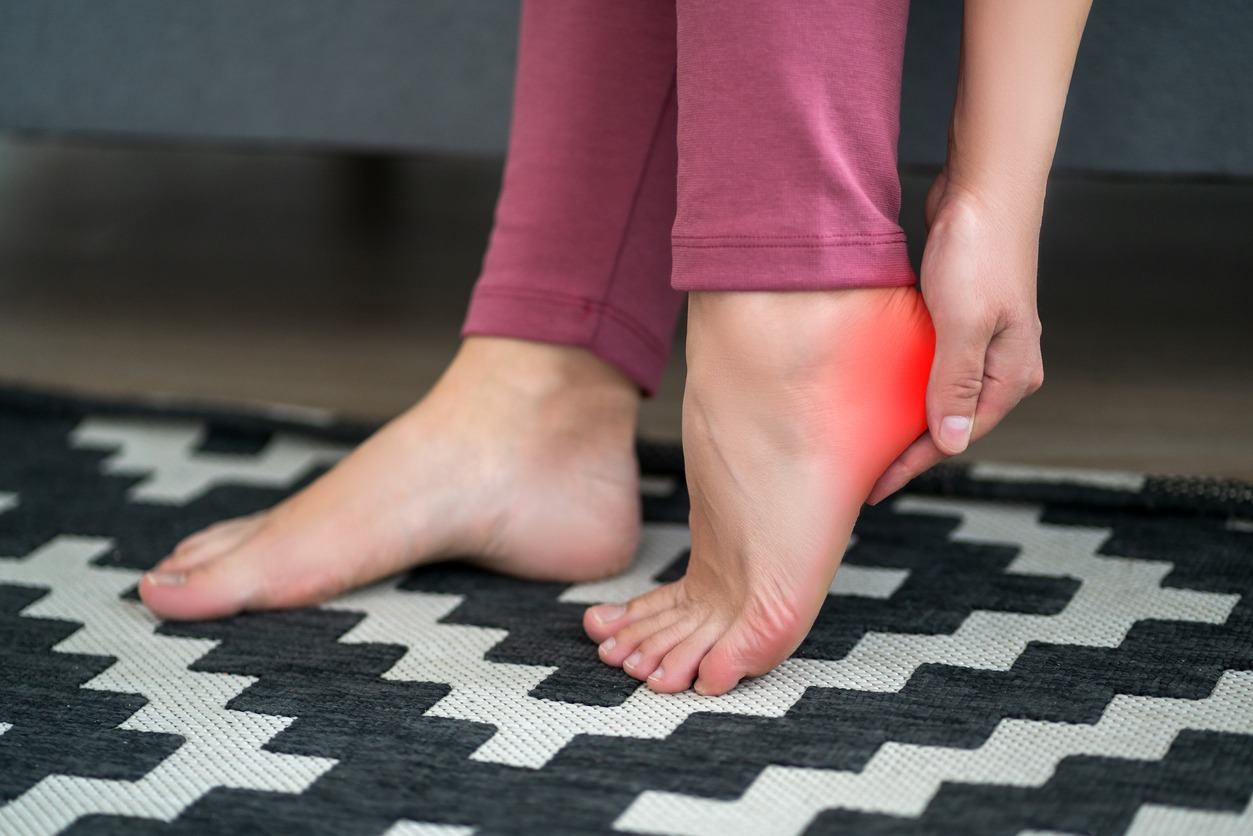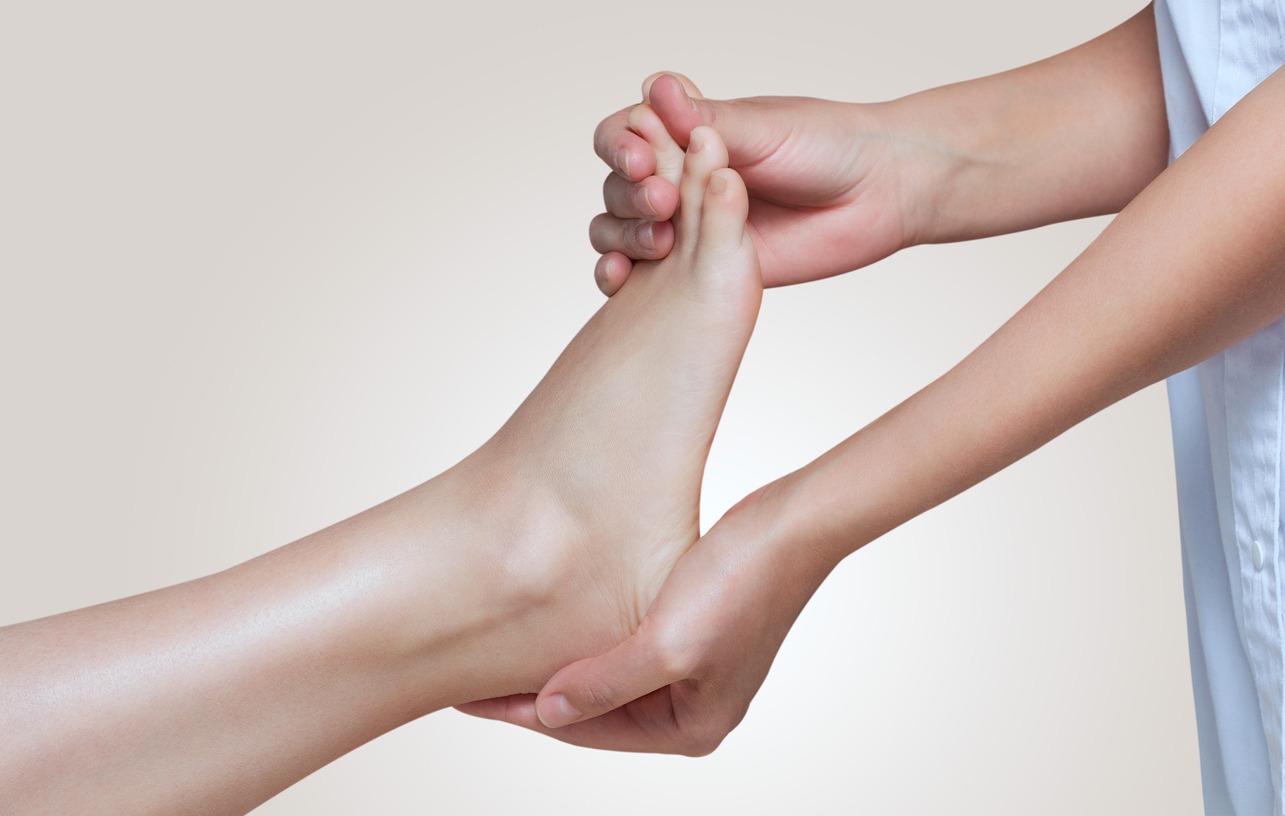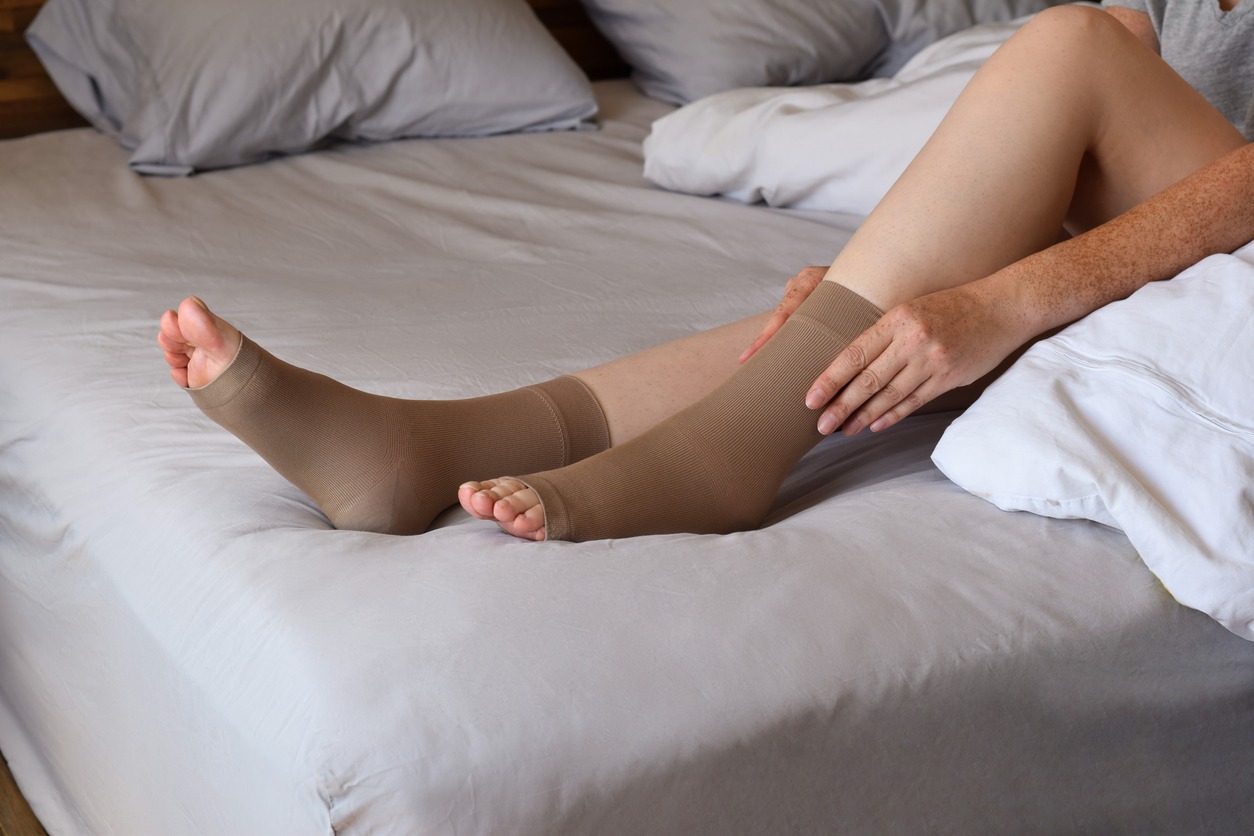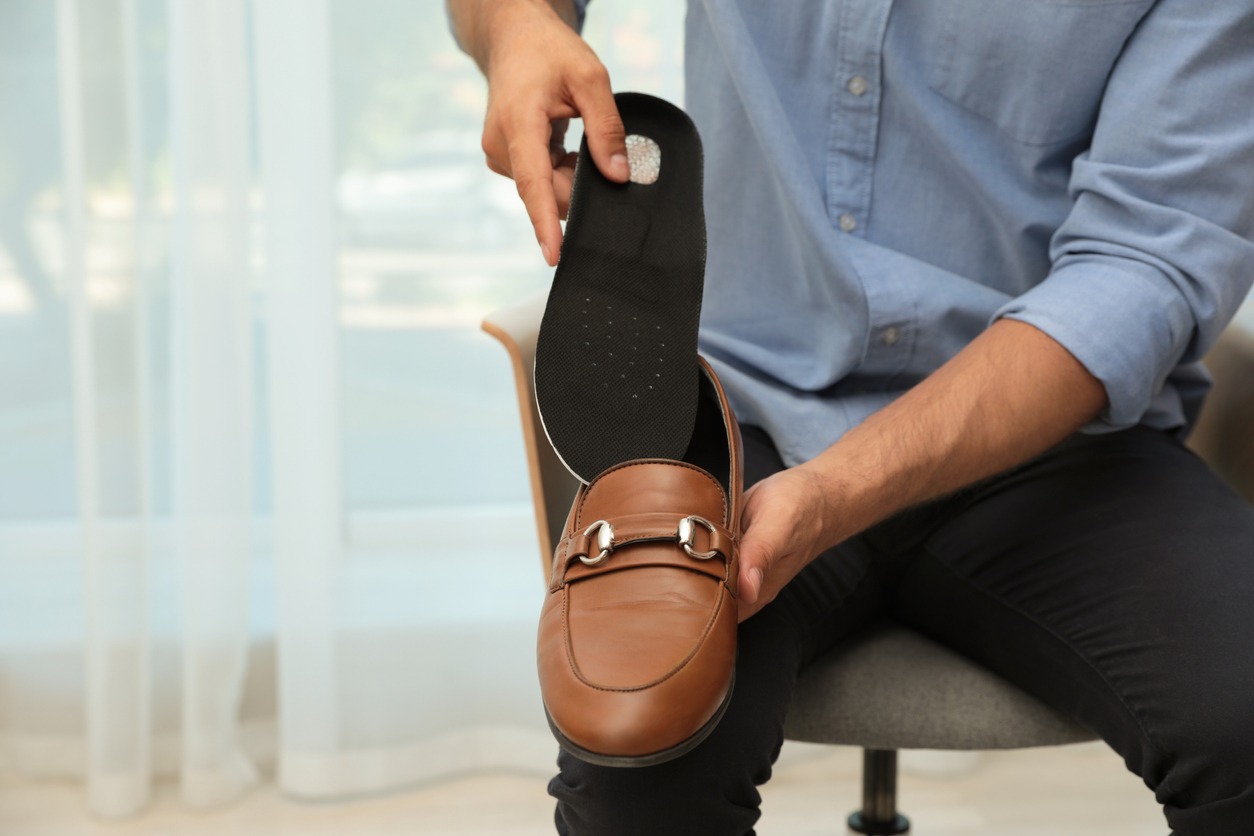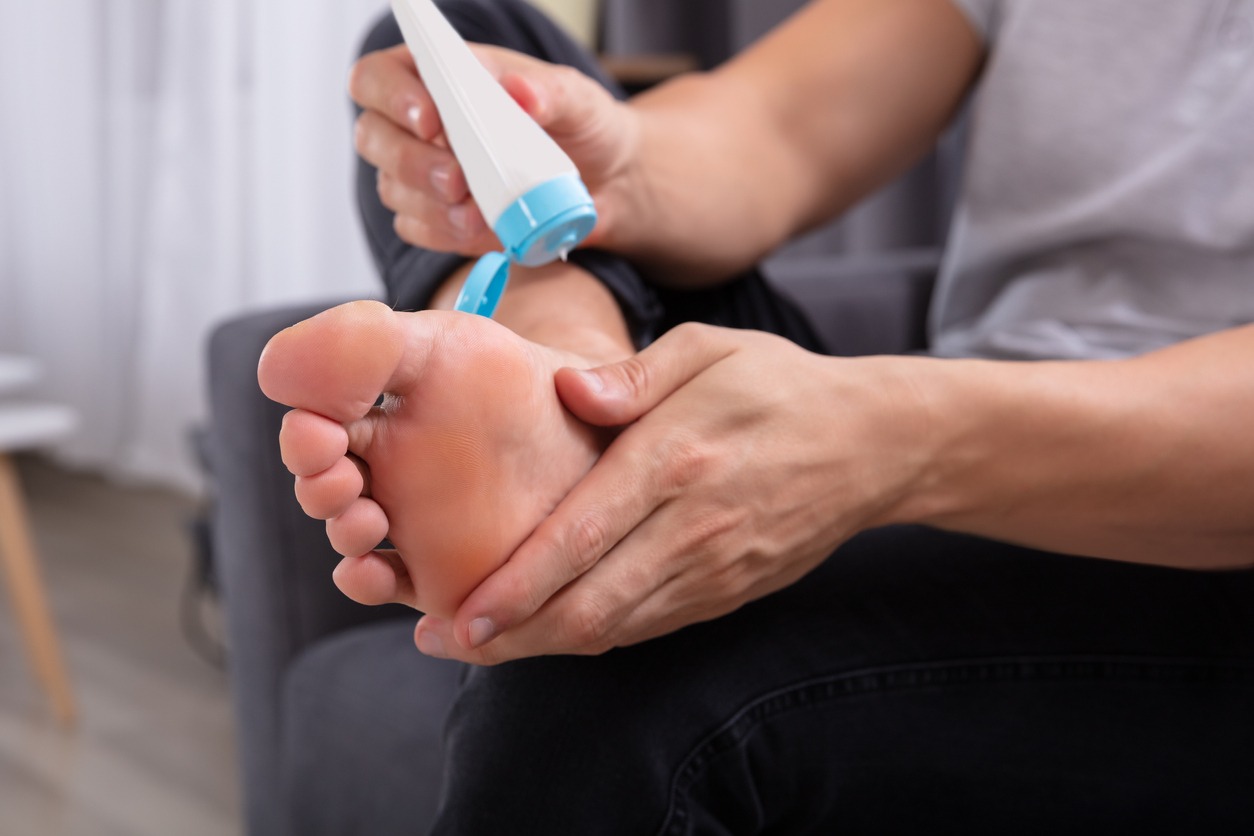Plantar fasciitis is among the most common causes of heel pain for a lot of people. It involves inflammation of a thick band of tissue that runs across the bottom of the foot connecting the heel bone to the toes, known as the plantar fascia. This condition usually causes stabbing pain that occurs with the first steps in the morning. As an individual get up and move, the pain decreases but might return after long periods of standing. There are times when pain is also felt when a person stands up after sitting.
It is a very common foot ailment that affects over two million people in the United States each year. Based on research, around one out of ten people will have plantar fasciitis at some point throughout their lives. [1] If you or someone you know is suffering from plantar fasciitis, there are different treatment options and products that you can opt for in order to alleviate the symptoms.
It is unlikely that any single product can magically cure the heel pain caused by plantar fasciitis. But when you use certain products as part of a full treatment routine, they can be very effective. If you want to learn more about these, read on as we’re giving you a guide to selecting essential foot products for plantar fasciitis.
What is Plantar Fasciitis?
Plantar fasciitis pertains to the inflammation in the plantar fascia of the foot. As we’ve mentioned earlier, it is the most common root of heel pain. The plantar fascia is a strong, tough attachment that is similar to a ligament. It runs from the heel to the ball of the foot and the toes. It connects the bones in the foot and forms the arch on the bottom of the foot.
This condition usually occurs when the plantar fascia is overused or stretched too far. When the plantar fascia is damaged, it can become swollen. The inflammation makes it painful for an individual to walk or use his foot. People often experience plantar fasciitis on one foot at a time, but it is also possible for the condition to affect both feet at once. [1]
Symptoms of Plantar Fasciitis
The main complaint of people who have plantar fasciitis is pain at the bottom of the heel or, at times, at the bottom of their midfoot area. The pain caused by this condition gradually develops over time, and the pain can either be sharp or dull. Some people also report that they feel a burning sensation or ache on the bottom of their foot extending outward from the heel.
The pain caused by plantar fasciitis is usually worse in the morning when taking the first steps out of bed or after sitting or lying down for a while. People who have plantar fasciitis may also find it difficult to climb stairs because of heel stiffness. Plantar fasciitis pain may flare up after prolonged activity due to increased irritation or inflammation. But the pain is usually not felt during the activity but instead after just stopping. [2]
Causes and Risk Factors of Plantar Fasciitis
Tension and stress on the plantar fascia may cause small tears. Repeated stretching and tearing of this part may irritate or inflame it, which causes heel pain. However, the main cause of plantar fasciitis still remains unclear in many cases. While plantar fasciitis may develop without an obvious cause, there are also some factors that may increase your risk of developing the condition. Below are some of them: [3]
Age: Most people between the ages of 40 and 60 commonly experience plantar fasciitis.
Certain Types of Exercise: Exercises and other activities that put a lot of pressure and stress on the heel and attached tissue may contribute to the onset of plantar fasciitis. Some of these activities may include running, aerobic dancing, and ballet dancing.
Foot Mechanics: A high arch, flat feet, or an atypical pattern of walking may affect the way the weight is distributed when you are standing. This can also put added stress on the plantar fascia.
Obesity: When a person is overweight, it can put additional stress on the plantar fascia, which may lead to heel pain.
Jobs That Keep You On Your Feet: There are jobs that keep people standing or walking on hard surfaces for hours, such as teachers, factory workers, and more. This may put them at increased risk of developing plantar fasciitis.
When you ignore plantar fasciitis, it may lead to chronic heel pain that may hinder your daily activities. You are also likely to change the way you walk to try to avoid the pain that plantar fasciitis comes with, which might lead to other conditions, such as knee, hip, and back problems. [3]
Treatments for Plantar Fasciitis
There are home treatments for plantar fasciitis, such as rest, icing, braces, and anti-inflammatory medicines, which are usually the first ways to treat the condition. However, if home remedies are unable to ease the pain, there are other options that you can opt for. Below are some of them: [2]
Physical Therapy
One of the key parts of treating plantar fasciitis is physical therapy. This treatment can help stretch the plantar fascia and Achilles tendons. Physical therapists may show you exercises to strengthen your lower leg muscles, which may help stabilize your walk and decrease the stress and pressure on your plantar fascia.
Shock Wave Therapy
If the pain still continues and other methods are not working, doctors may recommend extracorporeal shock wave therapy. Sound waves will bombard the heel to stimulate healing within the ligament. However, this therapy has side effects, such as pain, numbness, bruises, and swelling. It also has not been proven effective in consistently relieving the symptoms of plantar fasciitis.
Stretching Exercises
There are also gentle stretching exercises that may help relieve and prevent plantar fasciitis. Stretching the calves and the plantar fascia helps in loosening the muscles and reducing heel pain. Aside from that, it is also important to take a break from exercises like running in order to give the plantar fascia some time to heal.
If the treatments for plantar fasciitis do not work for you, the next option is surgical treatment. However, it is the most dramatic therapy for this condition. It is only done when the pain is severe or lasts more than 6 months to a year. Note that surgery may result in chronic pain and nerve damage. That is why it should only be considered after trying other treatment options.
Foot Products for Plantar Fasciitis
One of the important parts of treating plantar fasciitis is reducing pain, irritation, or inflammation in the plantar fascia ligament. There are foot products available in the market today that may help with this. However, keep in mind that these do not address the underlying damage to the ligament. They are just helpful and useful when it comes to alleviating the pain that comes with plantar fasciitis. Below are some foot products for plantar fasciitis:
Braces and Supports
There are braces and supports that can be used for plantar fasciitis. These can help stretch the calf and the arch of the foot. An example is a night splint, which is a type of brace that holds the foot in a flexed position and stretches the plantar fascia and Achilles tendon overnight. Wearing a night splint may prevent morning pain and stiffness.
Aside from that, you can also opt for special orthotics or arch supports to alleviate some of the pain by distributing pressure and preventing further damage to the plantar fascia. There are also boot casts that may immobilize the foot and reduce strain while the plantar fascia heals.
Below are some examples of braces and supports for plantar fasciitis to help you pick:
WXY Plantar Fasciitis Night Splint: This night splint for plantar fasciitis is designed for better support and a better flexible aluminum bar. It has a firm bottom plate that provides better and more comfortable foot support. It also provides the foot full freedom of movement. It provides a deep, therapeutic fascia stretcher which allows the connective plantar tissue to heal properly overnight. It is made with comfortable materials that give a cushioning effect for the pressure during the night.
United Ortho Plantar Fasciitis Leg Support Brace: This leg brace for plantar fasciitis feature flexion straps that provide a gentle stretching of the plantar fascia and Achilles tendon. It can be adjusted from 10 to 90 degrees for optimum pain-relieving stretch. It has a cool foam liner, padded calf, and ankle straps for additional comfort.
Alpha Medical Plantar Fasciitis Night Splint: This night splint can help alleviate nighttime foot and heel pain. It is lightweight but sturdy and breathable for more comfort. It features three padded straps with buckles to ensure immobilization. You can slowly increase its use over time as you stretch out the tendon and ligaments in your foot.
Socks
Just like a night splint, a plantar fasciitis sock is also worn overnight. But some can also be worn the whole day. Socks for plantar fasciitis can help prevent the plantar fascia or foot arch from tightening up while you sleep, which helps prevent pain when you get up in the morning. Over time, socks for plantar fasciitis lengthen, which reduces strain on your heel. Below are some examples of socks for plantar fasciitis to help you pick:
PAPLUS Plantar Fasciitis Sock: This is a compression sock that helps relieve foot pain by stretching the tendons and relieving pressure on the plantar fascia. These socks can also help improve foot circulation, stabilize ankle joints, aid in recovery, and prevent injuries. It provides arch compression, reduces heel pressure, and increases foot flexibility.
PhysFlex Compression Socks for Plantar Fasciitis: These compression socks provide strong compression to ensure effectiveness. They exert considerable pressure to help ease stress, swelling, injuries, arch pain, and Achilles tendonitis. It is comfortable, breathable, and moisture-wicking. It also features anti-slip cuffs to keep the socks in place.
SB SOX Plantar Fasciitis Relief Socks: These compression socks are perfect for relieving foot pain from plantar fasciitis and other issues. They are lightweight, comfortable, and breathable, allowing you to wear them all day and at night. These socks provide targeted compression throughout the foot to help reduce swelling and fatigue. They can also help improve blood flow and provide arch support.
Shoes
Wearing comfortable and supportive shoes is also a must for people who are suffering from plantar fasciitis. It is important to find sturdy and well-cushioned shoes to alleviate the pain and prevent further issues. If you have plantar fasciitis, it is better to avoid wearing sandals, flip-flops, and other flat shoes that do not have built-in arch support. You also have to avoid walking with bare feet. If you are looking for shoes for plantar fasciitis, below are some examples that might help you choose:
Orthofeet Innovative Plantar Fasciitis Shoes for Men: These are comfortable orthotic shoes for men that are perfect for those who have plantar fasciitis. These shoes feature premium orthotic insoles with an adjustable arch booster and multiple cushioning layers for soft support to ease the pain on the foot and heel. It is lightweight and best for walking.
OrthoComfoot Women Slip-On Shoes for Plantar Fasciitis: These shoes have strong arch support that is made of hard TPU and cushioning layer with a PU memory foam base. They can work wonders to enhance comfort and ease pain in the foot and heel. They also have latex metatarsal pad support that helps relieve foot pressure and fatigue and massaging gel waves that absorb shock and provide cushioning for all-day comfort. These shoes are super lightweight and easy to wear and take off, which is perfect for plantar fasciitis sufferers.
Insoles
Insoles, also called orthotic inserts, are also a great solution for those who have plantar fasciitis. These are added to existing shoes to provide more support and comfort. There are various options in the market that range from very cheap to specialty orthotics with stronger materials and hold. There are also custom orthotic inserts that are made especially for your foot using a machine.
Overpronation is a common contributing factor to plantar fasciitis. It is a condition where the foot rolls or flattens. As a result, the foot arch is repeatedly overstretched. Later on, inflammation or degeneration of the fascia occurs at the attachment to the heel. Orthotic-type insoles work by controlling the position of the heel to prevent overpronation. They can help reduce pain and inflammation, and they allow the foot to heal and prevent future injury.
Below are a few examples of insoles for plantar fasciitis to help you pick:
PROFOOT Orthotic Insoles for Plantar Fasciitis: This orthotic insert is clinically proven to fight the symptoms of plantar fasciitis, such as heel pain or the burning and stabbing pain in the foot. These insoles provide cushioning and support to the foot, especially if you are standing or walking for long periods. It can be used in a wide range of shoes for pain relief and comfort.
Dr. Scholl’s Plantar Fasciitis Pain Relief Orthotics: These shoe inserts are designed specifically for people who are suffering from plantar fasciitis. They have an underlying Shock Guard Technology that provides immediate and all-day relief of pain. These may also help reduce the occurrence of morning plantar fasciitis pain. They feature reinforced arch and shock-absorbing cushion that helps treat heel pain at the source and prevents it from coming back. It is made for casual shoes, work boots, and sneakers.
Medicated Foot Creams
The microtears of plantar fasciitis cause inflammation. Therefore, anti-inflammatories or NSAIDs like ibuprofen and aspirin can be taken to reduce the pain. However, most over-the-counter pain relievers are only safe to take for a short period, such as up to a week or ten days. These medicines also focus on whole-body inflammation relief. Aside from that, not all people can take these medicines due to allergies or other health issues.
One of the safer ways to apply medication to plantar fasciitis is through the use of medicated foot creams. These are targeted, topical anti-inflammatory creams that are applied only to the affected area. The majority of these creams are also safe for long-term use. Below are some examples of medicated foot creams for plantar fasciitis to help you choose:
Plantar Fasciitis and Heel Spur Cream by PMT: This cream provides targeted relief for the ligament, tendons, and muscles. It works within minutes after application. It can help increase blood circulation, reduce pain and inflammation, and treat the affected ligaments and muscles. It contains a high concentration of arnica, which is a powerful and potent ingredient that can reduce inflammation and treat pain syndromes. It quickly absorbs into the skin to provide fast relief.
Vita Sciences Plantar Fasciitis Foot Pain Relief Cream: This is an odorless cream that is applied to the feet to soothe the symptoms of plantar fasciitis. It is safe, deep penetrating, hypoallergenic, and powerful. It also contains high doses of vitamin E and vitamin B12. It easily absorbs into the skin to provide fast pain relief. It is also gentle on the skin, making it safe to use.
Conclusion
Plantar fasciitis is indeed painful, and ignoring it may result in chronic heel pain that may hinder your regular activities. Therefore, if you are experiencing its symptoms, it is better to talk to your doctor, particularly if the pain has been going on for a week. Your doctor will help you find the best at-home treatments to reduce the pain and inflammation in your foot. There are now lots of products that you can use to help alleviate the pain that comes with plantar fasciitis. You just need to pick the best one that will suit your needs and treatment plans. We hope this post helped you learn more about selecting essential foot products for plantar fasciitis.
References
[1] Cleveland Clinic. (2022, November 4). Plantar fasciitis: Symptoms, causes & treatment options. Cleveland Clinic. Retrieved March 2, 2023, from https://my.clevelandclinic.org/health/diseases/14709-plantar-fasciitis
[2] Larson, J. (2023, February 26). What to know about plantar fasciitis. Healthline. Retrieved March 2, 2023, from https://www.healthline.com/health/plantar-fasciitis#symptoms
[3] Mayo Clinic. (2022, January 20). Plantar fasciitis. Mayo Clinic. Retrieved March 2, 2023, from https://www.mayoclinic.org/diseases-conditions/plantar-fasciitis/symptoms-causes/syc-20354846



